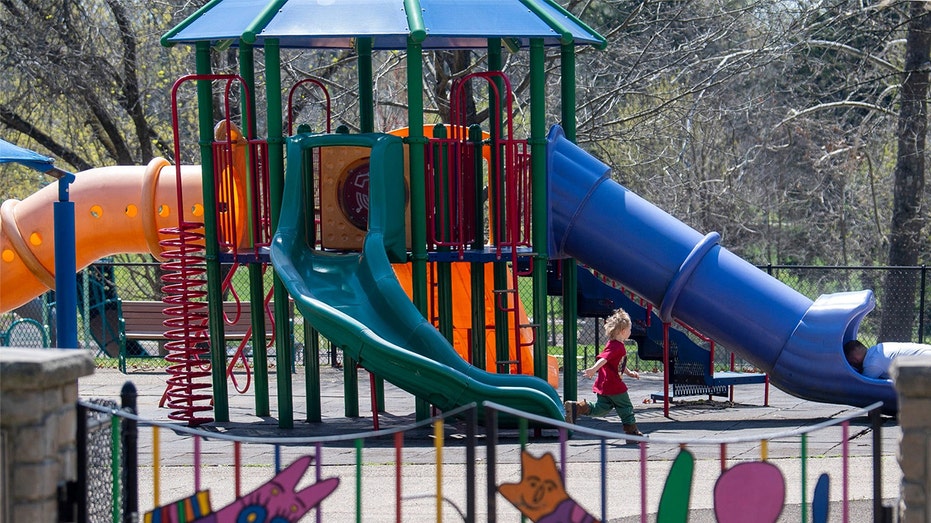In a concerning development, a Drug Enforcement Administration (DEA) agent has raised alarms over a troubling new trend among drug runners, who are allegedly using vibrant, candy-colored containers resembling trash cans to lure children on playgrounds. This alarming tactic is part of an ongoing battle to combat drug-related issues that seem to be infiltrating even the safest spaces for children.
During a recent community meeting held in Phoenix, Arizona, the DEA agent shared insights regarding this unconventional method that drug dealers may employ to distribute illicit substances. Although there is currently no widespread evidence of this occurring across the country, the agent emphasizes the importance of raising awareness within local communities to protect children.
The bright, attractive appearance of these so-called “trash cans” is designed to be visually appealing, particularly to young children who may be curious or attracted to the colorful containers. Once approached, it is alleged that children might find candy, toys, or other seemingly harmless items inside, making it easier for drug runners to attract and ultimately exploit them for nefarious purposes.
The agent mentioned that this tactic capitalizes on the innocence of children and their natural inclination toward bright and playful objects. It is a form of grooming that can have devastating consequences if a child gets involved with the wrong crowd. The DEA warns that the trend is similar to previous methods used by drug dealers to attract young individuals, yet the use of these colorful containers is particularly alarming due to the potential for rapid normalization in neighborhoods.
While there have not been specific incidents reported involving this method, the DEA seeks to inform parents and guardians about possible dangers, encouraging them to have conversations with their children about safety, responsibility, and the potential hazards present in public spaces like playgrounds.
The DEA agent emphasized the necessity for community vigilance and awareness. Parents are urged to monitor their children’s activities closely, ensuring they are aware of who their children are interacting with when they are outside playing. “Talking to your children about these dangers does not mean you’re scaring them unnecessarily. You are preparing them for a potential encounter,” the agent stated.
Furthermore, local law enforcement agencies are being encouraged to increase patrols in neighborhoods with playgrounds to ensure a safer environment for children. This proactive approach aims to deter drug activity in public spaces where children frequent.
Experts in child psychology note that it is crucial for parents to maintain open lines of communication with their children regarding these types of threats. Educating children about how to identify unsafe situations can empower them to report suspicious activities to an adult. “Children should feel comfortable coming to their parents or guardians with any concerns they may have, especially when it comes to individuals who may not have their best interests at heart,” advised child psychologist Dr. Emily Anderson.
In addition to community outreach, the DEA continues to support and initiate educational programs aimed at promoting drug awareness and prevention. These programs often include workshops, seminars, and outreach initiatives designed to equip parents, teachers, and caregivers with the knowledge they need to recognize signs of drug dealing or misuse.
As part of their efforts, the DEA has made valuable resources available online, providing details on how to identify dangerous substances and educate communities about the importance of reporting suspicious activity. Citizens are urged to contact local law enforcement if they suspect that drug activity is occurring in their neighborhoods, especially if they notice something unusual in playground environments.
The potential impact of this alarming trend brings with it far-reaching implications. The very spaces designed for children’s joy and development are at risk of becoming sites for manipulation and exploitation. Parents must remain informed and vigilant to ensure their children can enjoy these areas safely.
Parents are also encouraged to foster environments where conversations about drug awareness occur naturally. Through play and casual discussions, parents can address the issue without instilling fear, allowing children to gain insights into their surroundings without feeling overwhelmed.
Experts believe that early intervention and proactive communication can help shield children from becoming unwitting victims in these scenarios. Also, the sense of freedom that children experience while playing outside should not be taken away, but rather enhanced by education and community awareness.
While it remains to be seen if this trend will escalate further, the DEA’s proactive measures serve as a critical reminder that safety must remain a priority. As families head out to enjoy playground activities, they are encouraged to stay vigilant while simultaneously creating informed, aware children.
In conclusion, as communities work together to tackle this emerging issue, collaboration between parents, educators, and law enforcement agencies becomes essential. Mobilizing collective efforts to keep playgrounds and community spaces safe should always be a priority. By fostering a culture of awareness and knowledge-sharing, children can grow up in environments that not only empower them but also protect them from the dangers that lurk in plain sight.
As the situation continues to develop, it becomes more crucial than ever for vigilance and proactive measures to be established within communities to ensure that playgrounds remain secure spaces for children to enjoy without fear of exploitation or harm.
































